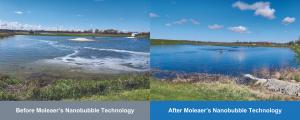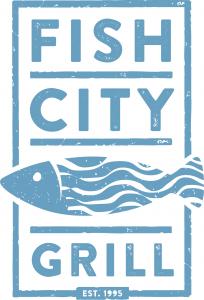Poultry production wastewater treatment lagoons were inhibited by surfactants and creating foul odors. Remediation accomplished with Moleaer Nanobubble tech.
— Charlie Brown, Operations Manager, Miller Poultry
ORLAND, IN, USA, April 4, 2024 /EINPresswire.com/ — CASE STUDY: Miller Poultry
Problem:
Poultry production wastewater treatment lagoons, inhibited by surfactants, ceased to fully treat waste, resulting in foul odors.
Solution:
Remediation with Moleaer’s Nanobubble Solution
Results:
Elimination of foul odors from lagoons; Significant YoY improvement in effluent water quality parameters
Miller Poultry, located in Orland, Indiana, has been raising all-natural chicken for more than 40 years, as an “egg to table” operation. The company treats its high-strength poultry processing waste in two ~16-million-gallon facultative wastewater treatment lagoons.
During poultry processing, food safety standards and rigorous Clean in Place (CIP) procedures require high concentrations of quaternary ammonium compounds (QACs or quats) used for disinfection. Quats are a subcategory of surfactants or tensides that also include all antimicrobial cleaning products, soaps, detergents and degreasing agents. These compounds—though vital for maintaining hygiene—are inhibitory to biological wastewater processes, impeding solids separation, oxygen transfer, and nutrient removal. Due to this surfactant inhibition in the lagoons, Miller’s natural biological treatment process developed foul odors, especially during warmer months of the year. The company faced complaints from neighbors and staff about odors emanating from the lagoons.
First Steps
Miller’s operations manager, Charlie Brown, tried several solutions commonly used to mitigate odor issues, including deodorant chemicals and bioaugmentation. However, these remedies failed to correct the issue. Lacking other approaches, Brown reached out to Moleaer Inc. to try nanobubble technology as a solution.
Technology Employed
Nanobubbles—70-120 nanometers in size, 2500 times smaller than a single grain of salt—selectively break down and deactivate surfactants and other inhibitory compounds in wastewater. This allows the natural biological process of the lagoons to work more effectively. Customers who’ve installed nanobubble technology have seen improved treatment efficiency, decreased chemical and energy demands, reduced foul odors, improved stability and resiliency to shocks.
Outcomes
After installing Moleaer’s solution on their lagoon in February 2023, Miller immediately noticed reduced odors. While immediate odor reduction was valued, Brown wanted to ensure that the foul odors didn’t return during the warmer months, when they were often the most significant.
By November 2023, Brown was convinced he had found a permanent solution to the lagoon odor problem. In addition, nanobubble technology produced reductions in ammonia, biological oxygen demand (BOD), total Kjeldahl nitrogen (TKN), and phosphorous, enabling Miller to improve effluent water quality from their treatment lagoons.
Moleaer technology is flexible, applicable to any biological treatment process, and scalable to any size facility. With nanobubble technology, industrial wastewater plants—including those at meat and agricultural processing facilities—can significantly improve the quality of treated water, reduce environmental impact, and streamline their overall industrial processes.
“Moleaer’s sales, service and engineering teams helped us solve our longstanding odor problem, delivering great science and even better results,” shares Brown.
Download Full Case Study: https://www.moleaer.com/resources/case-study-miller-poultry-lagoon
Photos to accompany this article are available for download at https://drive.google.com/drive/folders/1vyt_4XWmAkABfcXYzatzPMBDctUHDDId?usp=sharing
————————————————————
Moleaer Inc. helps businesses and utilities design and implement cutting-edge solutions powered by nanobubble technology. Their flexible, scalable systems solve common, complex wastewater treatment challenges through the unique properties of nanobubbles due to their size. The company offers custom-tailored solutions based on industry, size, and other factors, featuring reliable, high-quality products and responsive support services. Moleaer currently totals 650+ million gallons of water treated per day, with 2500+ generators in operation in 55 countries. Learn more at Moleaer.com.
Jenn Fisher
Moleaer
+1 424-558-3567
[email protected]
Visit us on social media:
Facebook
Twitter
LinkedIn
Instagram
YouTube
![]()
Originally published at https://www.einpresswire.com/article/700670758/miller-poultry-eliminates-odors-in-wastewater-treatment-lagoons-with-moleaer-nanobubbles




